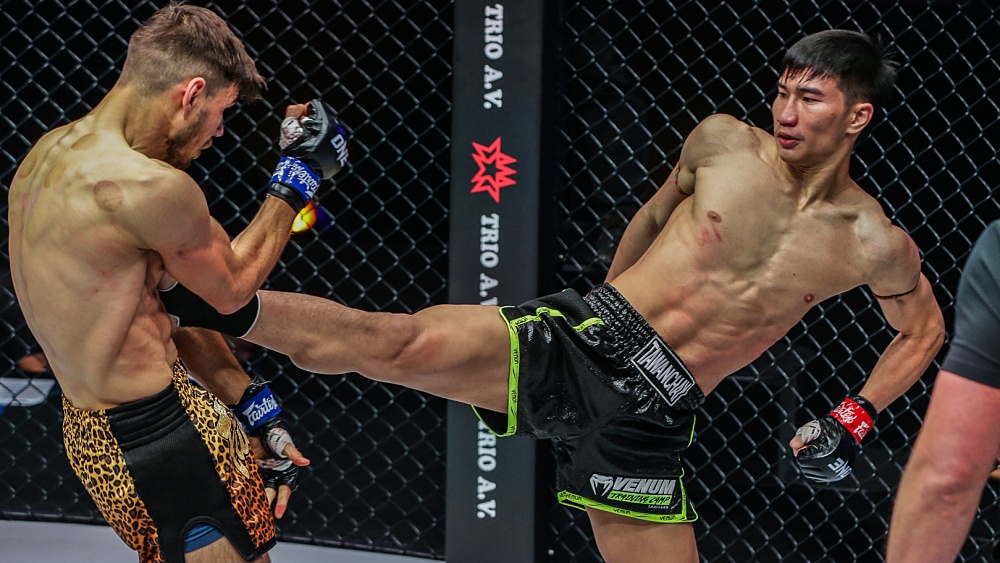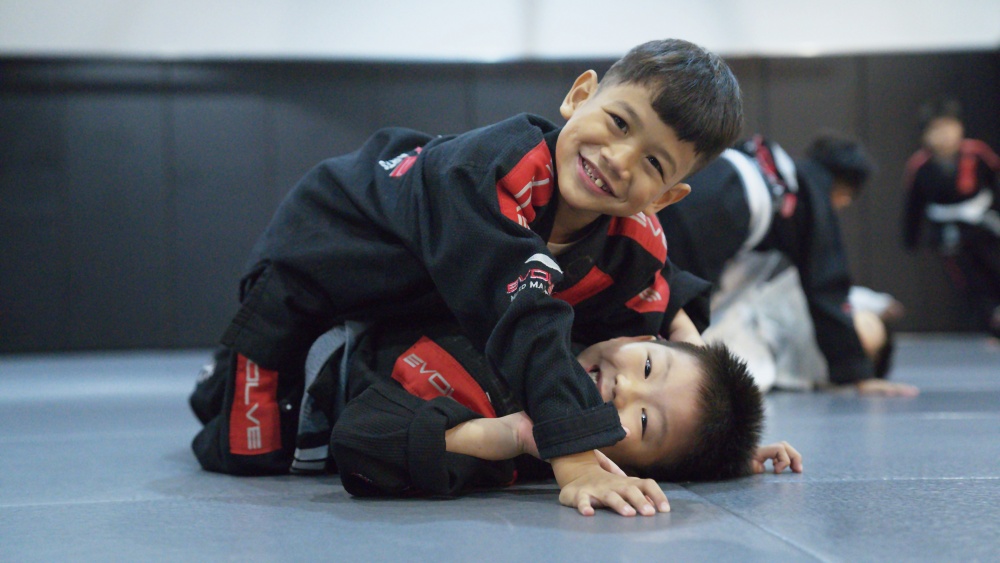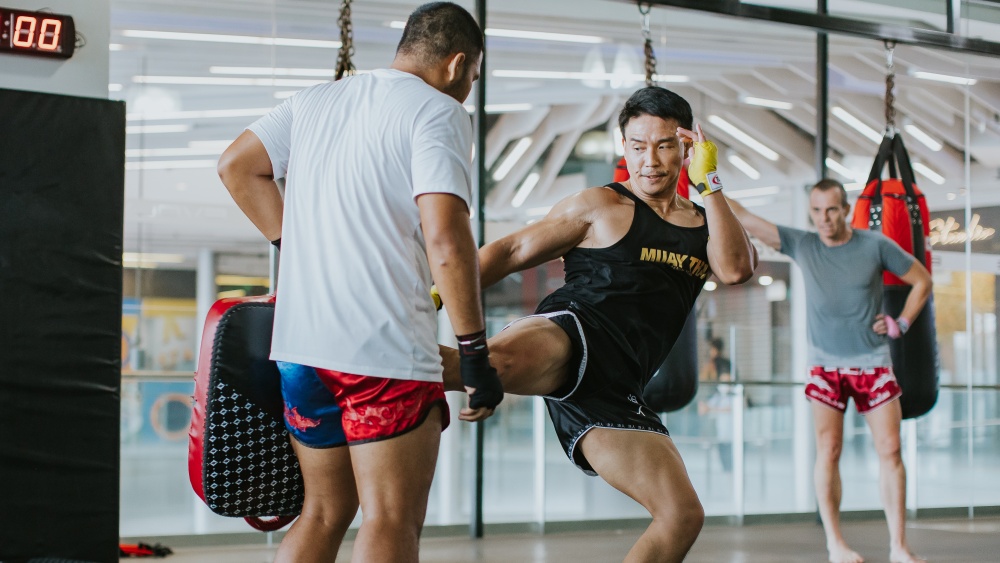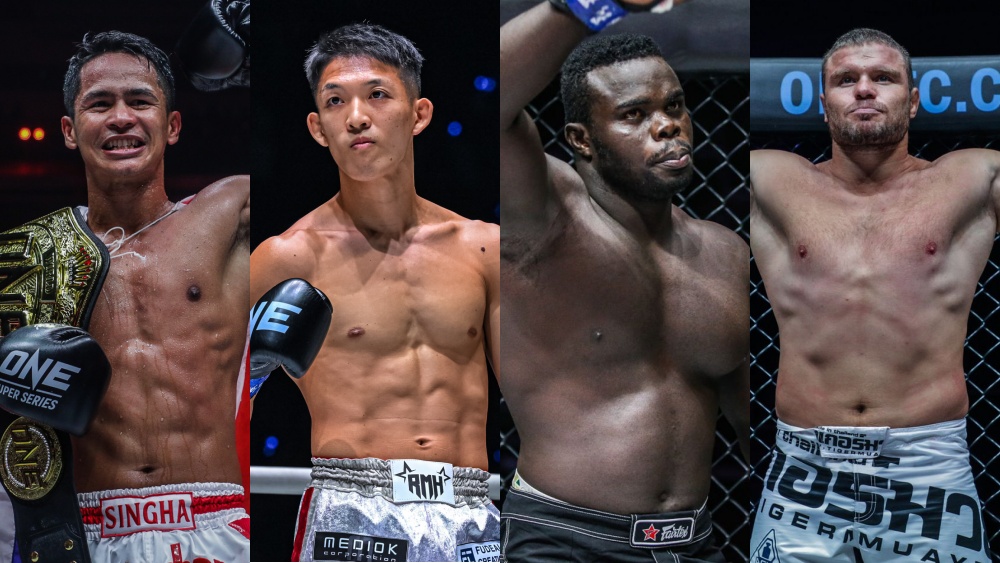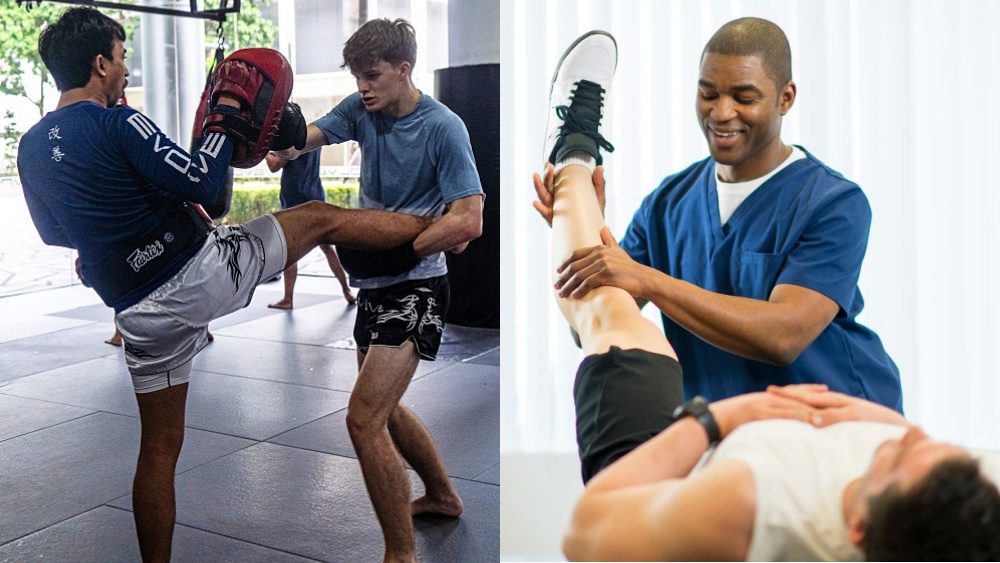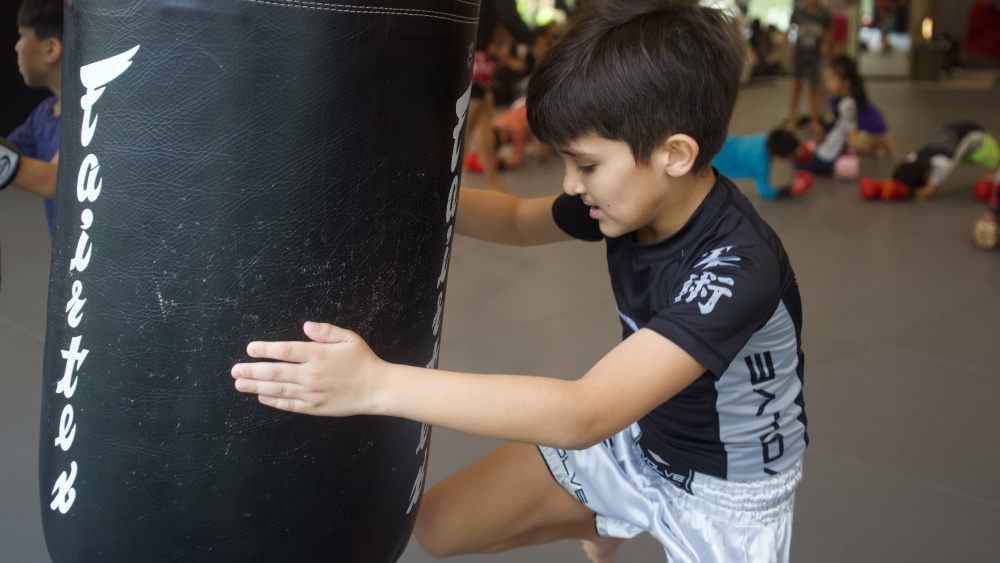In the Muay Thai world, Tawanchai PK Saenchai is knowingly one of the best strikers. The ONE Featherweight Muay Thai World Champion is known for his showcase of devastating kicks. Amongst his arsenal, his teep stands out as a particularly powerful weapon. Today, Evolve Daily is pleased to share a guide on ten ways to develop a powerful teep like Tawanchai.
One key aspect of Tawanchai’s devastating teep is his initial southpaw position. As most opponents are orthodox, Tawanchai creates an open-stance matchup. This changes the range and angles available to each fighter.
Tawanchai’s teep comes from Saenchai’s lineage; Saenchai himself learned it at Jocky Gym from Ajarn Pipa. This style of teep is a hybrid of a teep and a sidekick and is often called the side teep. The “side teep” is delivered with your foot pointed forty-five degrees inwards. From a southpaw stance, this allows you to teep from further away. At this distance, the only weapon your opponent has is a teep of their own.
Orthodox fighters can also utilize the side teep, Buakaw is one fighter that mixes side teeps with more straight-on teeps beautifully. Watch the above video which features Ajarn Pipa himself teaching the basic side teep.
Buakaw Teaching Push Kicks
In the video above, Buakaw Banchamek, one of the greatest Muay Thai Fighters of all time is teaching another fighter how to work the teep on the heavy bag. Buakaw alternates between side teeps and regular teeps, demonstrating the importance of practicing both equally. In his fights, Buakaw uses the side teep from an orthodox stance to kick from a further distance.
Samart Payakaroon, who had arguably the best teep ever, emphasizes balance over power. In fact, he says the key to power is through balance. Stability through proper biomechanics creates a frame with your body that stops an opponent from moving forward entirely.
The side teep starts with a small step with your rear foot, towards your lead foot. This breaks conventional footwork wisdom; however, when done correctly, it provides a massive increase in your range, power, and distance control.
Once you step your rear foot forward, shift your weight over your rear leg fully. A good cue to help train this is to have your head over your rear hip, and your rear hip over your rear knee. Keeping your rear heel planted will also aid in your balance greatly. The video above feature Samart Payakaroon himself explaining the importance of balance and how to cultivate it.
Clean Technique
A large part of Tawanchai’s teep mastery is his picture-perfect form. You can literally take a freeze frame during his teep and the biomechanics discussed will align with his form on screen.
The initial rear step discussed above is a key aspect in developing an effective side teep. As you progress and grow more confident in your skills, you can add a slide to the end of the step, allowing you to cover most of the ring in one movement!
One key detail of both the lead and rear teeps of Tawanchai is the direction of his toes while he is kicking. Traditional teeps, both lead and rear, have your toes facing upwards. Tawanchai’s teep, in the lineage of Ajarn Pipa, has both of his toes turned the same way – inwards towards his rear side. For the lead teep, this makes his kick very hard to catch, as well as adding a considerable amount of range. For the rear teep, turning your foot towards your rear side allows for better contact between your foot and your opponent’s body. As a southpaw, your rear teep on your left side can fit in the space between your opponent’s right ribcage and pelvis. Turning your foot slightly towards the rear side allows for a better fit, making it even harder for your opponent to avoid your teep.
Another crucial detail of the side teep is to ensure you are practicing full extension of the kick. You should rotate your body more than a traditional teep, but less than a sidekick. This amount of rotation affords your extra power and reach, without shirking defensive responsibility. Regardless of the combat sport, you should aim to not turn your back towards your opponent! Above is Gabriel Varga explaining the above concepts on Tawanchai’s side teep.
Shadowboxing is an essential part of training your side teep. Because you are effectively “missing’ each kick, practicing your teep through shadow work teaches you to extend, make contact, and retract your leg with balance.
Shadowboxing is also the perfect time to practice combining your teep with the rest of your striking arsenal. Your teep can be a powerful tool used mid-combination to control range and inflict damage on your opponent.
When you are starting out, keep things simple and drill things slowly. There is an old adage in martial arts, slow is smooth, and smooth is fast. Avoid any jerky movements; intentionally moving your body smoothly will pay dividends for your growth long term!
Pick a simple combination, then add a teep before and after. For example, an effective sequence to practice would be lead teep, jab, cross, and rear teep. Make sure to reset back to your stance after each combination and stay defensively responsible!
The heavy bag is a quintessential tool for the development of any striker. Practicing your teep on the heavy bag can lead to a quicker, more powerful teep, as well as making your technique more efficient over time.
Many fighters of the golden age of Muay Thai would teep the heavy bag five hundred to one thousand times each day, per leg! This repetition is part of what made legends such as Samart Payakaroon and Dieselnoi so dangerous.
There is a myriad of ways to drill your teep with the heavy; above is a video with three simple drills.
Conclusion
Tawanchai’s teep is one of the best of any current fighter; incorporate the above concepts to follow in his path to mastery! Let us know which of these helps you the most, happy training!
You may also like:
Hitman Alert! The Liam Harrison Fights That Will Never Be Forgotten And How To Fight Like Him
